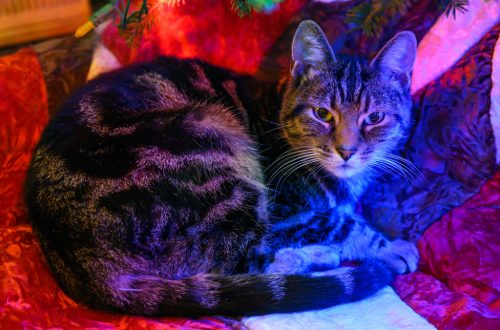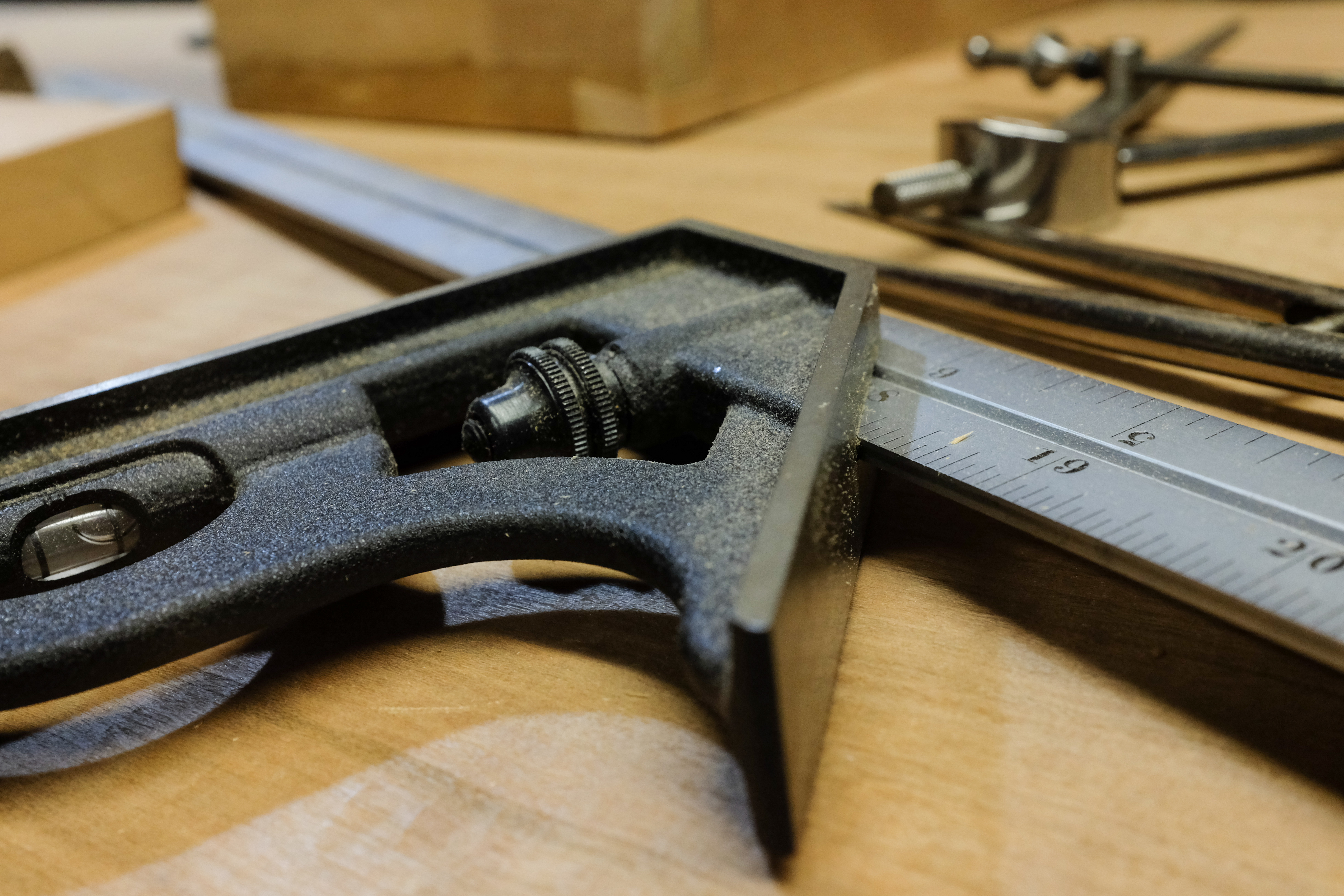From the Sewing Room: Skirt #3 (and more about how sewing is just engineering with soft material)
 Hello world. Jenny has been working hard on keeping the blog here up to date with her stuff. I’ve been slacking, though, mostly because my brain has been busy when my hands haven’t been.
Hello world. Jenny has been working hard on keeping the blog here up to date with her stuff. I’ve been slacking, though, mostly because my brain has been busy when my hands haven’t been.
A few months ago, Jenny and I started to work on cleaning-out the back bedroom. When I first bought the house, it was my office, library, and general technology depository. When we were dating, my desktop computer finally gave up the ghost. Since I had a laptop for work, and was spending significantly less time with a computer at all since meeting Jenny, I decided not to replace the desktop. The lack of a desktop began to obviate the need for an office in that room, so I moved most of my office stuff to the third floor for when I needed office space. As we approached the wedding, we realized that we were going to need a guest bedroom to house family, so one weekend Jenny helped me move an old bed set in there. Then it was a library with a bed, some storage and a shelving unit full of technology stuff. After the wedding, we moved Jenny’s desk in there, and the printer lived in there, so it was a guest bedroom with a printer and desk, technology stuff on a shelf, a library, and storage. Time passes. We had been using the diningroom table for a lot of our craft and project work, which was fine, but Jenny wanted some dedicated space. I, too, wanted to find some dedicated space for some of the sewing stuff that I was doing, too, and had dreams of a small bench where I could work on electronics projects without having to tear stuff down for dinner, and without having to protect the table surface with cardboard whenever I wanted to work. So began the back bedroom re-work project.
First we went through the bookcases and pulled out old magazines and things that could be recycled. Then, we sat down with our collection of books and went through what we wanted to keep and what we wanted to re-home. I normally don’t re-home many books, but I had books for college classes and a lot of technology books that were outdated or no longer relevant to what I do. Instead of gathering dust on our shelves, they needed to find another home. Many of those went to the People’s Library book sale (coming up in July!). Some of the really old and outdated tech books went to recycling, especially those that I knew contained inaccurate information.
Once the bookcases were clear, I took care of a lot of the extra clutter in the room. That gave us enough room to set up a work table for Jenny and one of our sewing machines (a Singer “school model,” mostly mechanical, from somewhere in the early 2000’s). About a week ago, I finally flipped the bed set up against the wall in the space between the kitchen chimney and the window, giving me room to set up a work table of my own. I had plans to make another few skirts for Jenny, who had requested a couple that were a little longer and black, so that they would go with more of her tops.
 A trip to Joann got me a bunch of interesting fabric. I got some plain black poly/cotton woven fabric with a light sheen, some black sheer embroidered fabric and some black lining material to go with it, and the remainder of a bolt of black microsuede with an embroidered floral pattern.
A trip to Joann got me a bunch of interesting fabric. I got some plain black poly/cotton woven fabric with a light sheen, some black sheer embroidered fabric and some black lining material to go with it, and the remainder of a bolt of black microsuede with an embroidered floral pattern.
I was really excited about the microsuede. I loved its drape and feel, and thought it would make an awesome skirt. I knew it was going to be a little different work work with, so I did some reading and got myself ready for a bit of a challenge, then went to work laying out the material.
OK, first problem: Dark material. My fabric marking pen was also dark. I couldn’t find anything really light enough to work in the house, so back out I went. I picked up a fabric marking pen for dark fabrics, and headed home.
Here’s where we get some engineering. Microsuede is a type of microfiber. Microfiber has some interesting inherent properties. It can wick and repel moisture, for instance. I didn’t think much about that when I bought a marker, which uses liquid to mark surfaces. Oops. I made it work, but it wasn’t easy and was not leaving me all that happy. The better bet (and what I will get for future projects with this stuff) is either tailor’s chalk or fabric pencils, both of which are non-liquid and should give me fewer problems.
Another interesting microfiber property is that the fibers are so small and packed so tightly that regular pins and needles have some difficulty penetrating the fabric. I should have figured this out when I was pin-basting the first seams. When I went to sew them, the machine was working really hard to punch through the fabric, and the enormous amount of friction was causing skipped stitches everywhere. I was starting to freak out at one point, as I thought something was seriously wrong with my machine. I bought this Pfaff 2144 used last year from Thornton in Monroeville, and it has been an amazing machine. I was getting worried that something had gone south with it, and was dreading having to take it in for repair during the time when I had the most free time to work with it. After doing some more research, I got some hints and tips that helped me to fix the problems and knock this project out quickly:
- Get a microtex/microfiber needle. This was HUGE. All of a sudden, the machine got nice and quiet again, and started to behave more predictably. It was still skipping stitches with just the needle change, but this was big. It was huge. I wish I had seen this before I even started trying to sew with a standard 80/12 sharp.
- Drop the thread tension. In the case of my Pfaff, I had to drop it two full numbers below the default for whatever stitch I was sewing. So for a stitch where the default tension was a 4, I had to sew at a 2. This was also huge. Suddenly, I was getting almost no skipped stitches. Yahoo!
- Use a walking foot and get a roller foot if you can. The Pfaff has their trademark “IDT,” which works like a walking foot and generally does a great job. I engaged that on everything I could, and it really helped. Sewing the waistband on this pattern is done with a zipper foot. The IDT and zipper foot do not play nicely together, and a regular foot was really hard to manage, so my right hand played the part of the IDT and helped to pull the fabric taut and also pull it through for each stitch. The IDT/right-hand-pull eliminated the issues I had with the needle forcing the fabric down through the needle plate and jamming the machine.
- Slow down. I had to sew everything more slowly on the machine than I did when I was using standard woven cotton and the like.
The pattern I’ve been using to make these skirts is really easy. It’s the Kwik Sew K3256 pattern, which makes three different styles of skirt. I found this when I was looking for some simple projects to make for Jenny that would give me some experience with the new machine and some different fabrics. These are really easy because they use an elastic waist and easy seams, so fitting and testing aren’t as critical as they would be on a fitted skirt. That made it possible for me to get the measurements I needed from Jenny, and then work at my own pace without having to interrupt her for test fittings. The way this pattern is set up, almost the whole thing can be done with a serger. The Pfaff has a decent set of overlock-and-join stitches that do a good job joining and finishing in one step, so I use those on most of the seams. The first two skirts I made were the easiest of the three styles, view B. The microsuede skirt is view A, which has a slightly more interesting flounce. I have some fabric I intend to use to make a view C version at some point, but I need to see if I have enough.
Now that I’m getting a little more comfortable with the tools and terminology, I’m planning to branch-out and do some more challenging things. My personal goal is to eventually make myself a kilt, in the style of the Utilikilt. Then, I want to start making my own dress shirts. I think I have a long ways to go before I get there. In the meantime, I’ll be making some more stuff for Jenny and the occasional other requestor. 🙂
When people find it hard to believe that I am learning about and enjoying sewing, I tell them that sewing is just engineering with soft material. I think maybe that’s why I was drawn to and find enjoyment there. I like woodworking for many of the same reasons. I enjoy the challenge of learning new tools, techniques, and materials. My challenge to myself with woodworking was to get to the point where I was making my own designs instead of using pre-packaged designs. Everything I make in the woodshop now is my own design, and I’m happy about that. I would love to get there with sewing stuff, too, but I haven’t found the kind of community knowledgebases like those that exist for woodworking and furniture design. I know I’ll get there eventually. That’s my goal, at least.
Now on to the next project….


